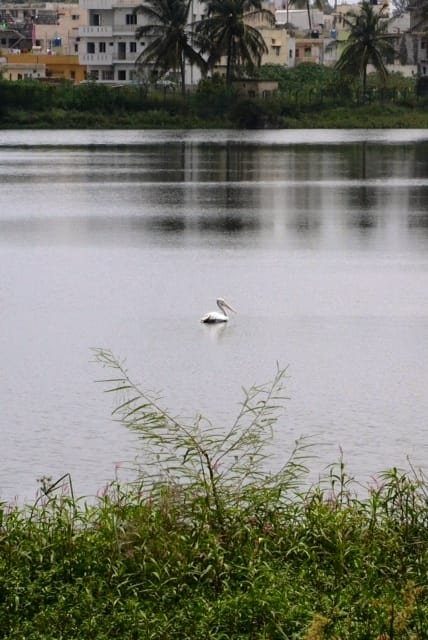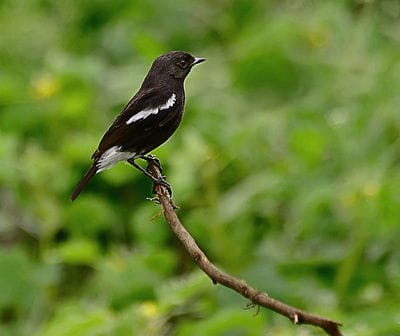Great (Global) Backyard Bird Count this weekend!
Bangaloreans, put your plans for this weekend on hold and participate in the Great Global Backyard Bird Count (GBBC)! Or maybe, you could carry on with your plans, so long as you participate in the Great Global Backyard Bird Count!
The Great Global Backyard Bird Count is an annual census of sorts, tracking species and number of birds across the world. Launched in 1998 by the Cornell Lab of Ornithology and National Audubon Society, it was the first online citizen-science project to collect data on wild birds. In the past 14 years, tens of thousands of people have participated to create a record of the distribution of birds in their natural habitat. The information collected from GBBC along with other surveys, helps scientists learn how birds are affected by environmental changes.
2014 Statistics
- Checklists Submitted: 272
- Total Species Observed: 672
- Total Individual Birds Counted: 25251
2013 Statistics
- Checklists Submitted: 137,998
- Total Species Observed: 4,258
- Total Individual Birds Counted: 33,464,616
- Number of participating countries: 111
The 2013 edition of the Bird Count saw participants from 111 countries count 33,464,616 birds. More than 4,258 different species of birds were documented – this alone accounted for one-third of the world’s bird species.
The current edition of GBBC will run from Friday February 14th to Monday 17th. On any or all days of the Bird Count, one needs to spend at least 15 minutes to identify the different species of birds. To participate, you will first need to create a profile on the GBBC site. You will then need to submit your observation – where you spotted the bird(s), how many of them, which species and the location where you spotted them. Even if you are a beginner birder, the website provides suggestions that can help you identify the birds that you see. Submissions can be made online on the GBBC website and through any of the Birding Apps (for Android and iPhone), that are available for download on their website.
If you are a photographer with a steady hand and a keen eye for spotting birds, you can also participate in the Photo Contest. You can view some of the entries from last year’s photo contest here.
Bird Counting in Bangalore

Spot-billed Pelican at Alahalli Lake (Pic: Vikash Kumar)
There are a number of birding events across the country being organised by Bird Count India, a website that supports the listing and monitoring of birds in India, to encourage folks to participate in GBBC. Bangalore alone has 3 events taking place – at Madiwala Lake, Agara Lake and NCBS – which are open to the public.
-
Madiwala Lake: Bird count from 7:30 am to 9:00 am on 15th February
-
Agara Lake: Bird count from 7:30 am to 9:00 am on 16th February
Ranjani Murali, one of the organisers stated that binoculars and bird books will be made available to those who come for the bird count. She added that they hoped to spot anywhere between 20 to 30 species of birds. Most of them would be common species like crows and kites, but considering that the event was being held in a wetland, folks could expect to spot water birds such as moorhens as well. Those interested in attending the Bird Count can call on 9986585191 or 9483522474 for more details.
Suhel Quader, an avid birder from the Sahakar Nagar area, is taking part in the GBBC. He says that he has spotted around 18 species of birds so far; while dropping off his daughter to her school bus and from the terrace of his home. He adds, “What’s great about the GBBC is that you can watch from wherever you are.”

Pied Bushchat (Pic: Wikimedia Commons)
When asked if he saw anything interesting, he had this to say, “I haven’t spotted anything out of the ordinary yet, but I did hear something interesting. The Pied Bushchats who have stayed quiet all these days, have been singing for a couple of days now. This is a sign of spring and that they are getting ready to breed.” Suhel has also been keeping a track of the birds near his home every day since the year commenced. He plans to continue to do this for a year.
Though we’re but a day into this year’s Bird Count, 672 species of birds have already been identified worldwide. Participate in the Great Global Backyard Bird Count to connect with nature and make a difference to the birds of the world.
Additional Resources
Related Articles
Birds of summer in Bengaluru
Merrily sing the birds in Jalvayu Vihar
Hello Ganga,
Thanks for the information :). I entered my bird picture for the 2014 contest as well. The pictures there were amazing. Thanks again .
You’re welcome 🙂